
Roots
Consider for a moment the profound connection between textured hair and the very essence of water. It is not merely a cleansing agent, nor a simple solvent. Water, in its quiet yet persistent way, holds the power to shape, to swell, and indeed, to alter the foundational character of each individual strand.
For those of us with curls, coils, and waves, this relationship is a delicate dance, often misunderstood, yet central to the vitality and resilience of our hair. To truly comprehend how water affects the structural integrity of textured hair, we must first look to the core of the strand itself, observing its fundamental architecture and the subtle ways it responds to the presence of this life-giving element.

The Hair Fiber Its Elemental Composition
At its heart, a hair fiber is a marvel of biological engineering, primarily composed of keratin proteins. These proteins arrange themselves into a complex, helical structure, much like a spiraling staircase, which then forms larger bundles. The outer layer, the Cuticle, comprises overlapping scales, similar to shingles on a roof, providing a protective shield.
Beneath this lies the Cortex, the main body of the hair, where the majority of its strength and elasticity resides. Within the cortex, macrofibrils and microfibrils are bound together by a network of chemical bonds, notably disulfide bonds, which contribute significantly to the hair’s shape and durability.
Textured hair, with its unique elliptical cross-section and varying degrees of curl, possesses an uneven distribution of keratin and a more complex cuticle layer compared to straight hair. This inherent structural variance means its interaction with external elements, particularly water, takes on a distinct character. The bends and twists of the hair shaft create points of weakness and strength, influencing how water penetrates and is absorbed.
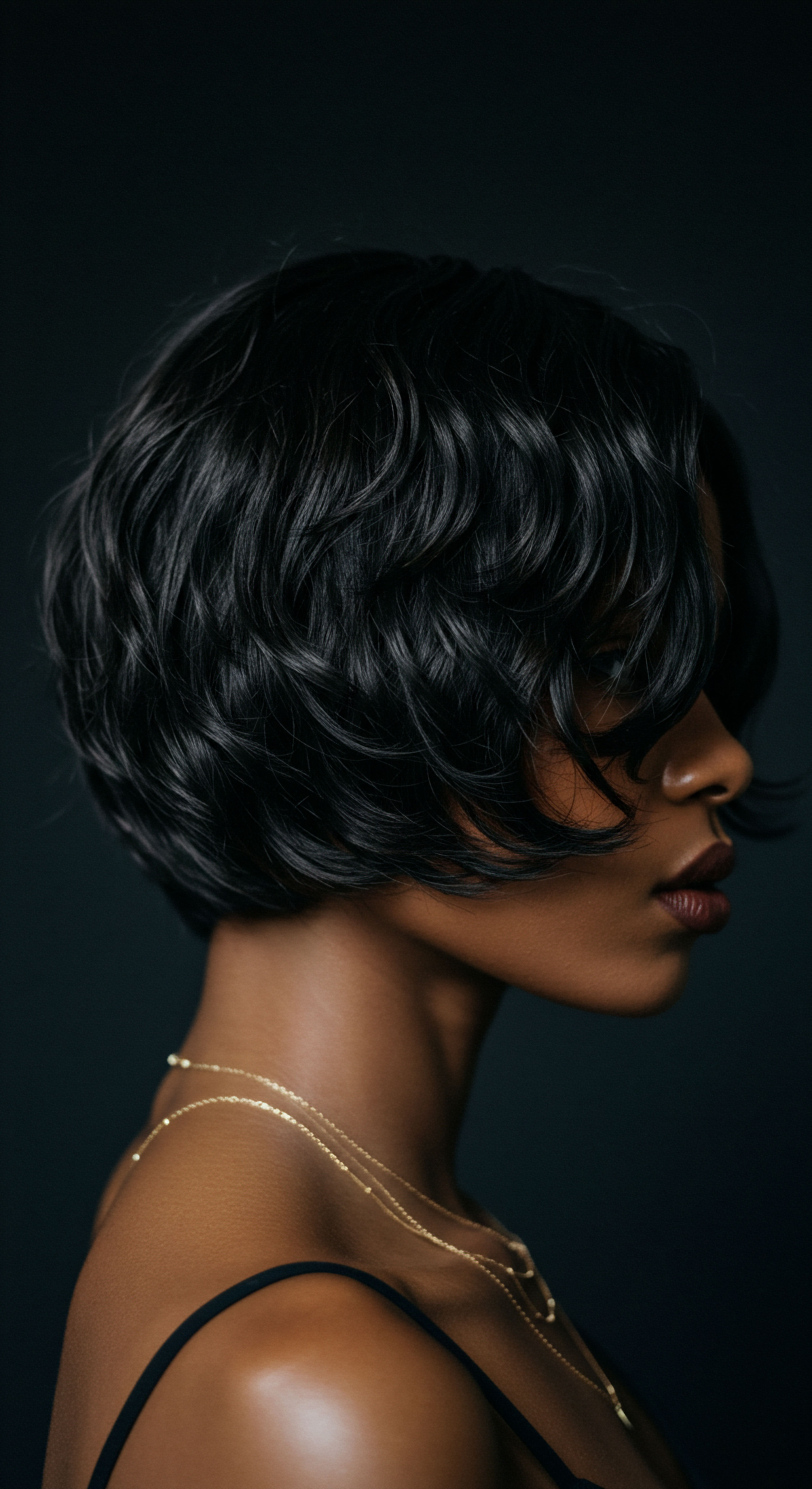
Water’s Entry Point The Cuticle’s Response
When water encounters the hair shaft, its initial interaction is with the cuticle. The cuticle, designed to protect the inner cortex, is also the gateway for moisture. In its natural state, the cuticle scales lie flat, creating a smooth, light-reflecting surface. Yet, the presence of water, particularly warm or alkaline water, can cause these scales to lift.
This lifting is a crucial step in allowing water molecules to permeate the hair fiber. The degree to which these scales lift and the rate at which water is absorbed is often referred to as Porosity.
High porosity hair, with its more open cuticle, tends to absorb water rapidly but also loses it quickly. Low porosity hair, conversely, resists water initially due to tightly bound cuticle scales but, once wet, retains moisture for a longer duration. This difference in porosity profoundly impacts how water influences the hair’s internal structure and its subsequent drying behavior.
Water’s interaction with textured hair begins at the cuticle, influencing its absorption and subsequent structural shifts.
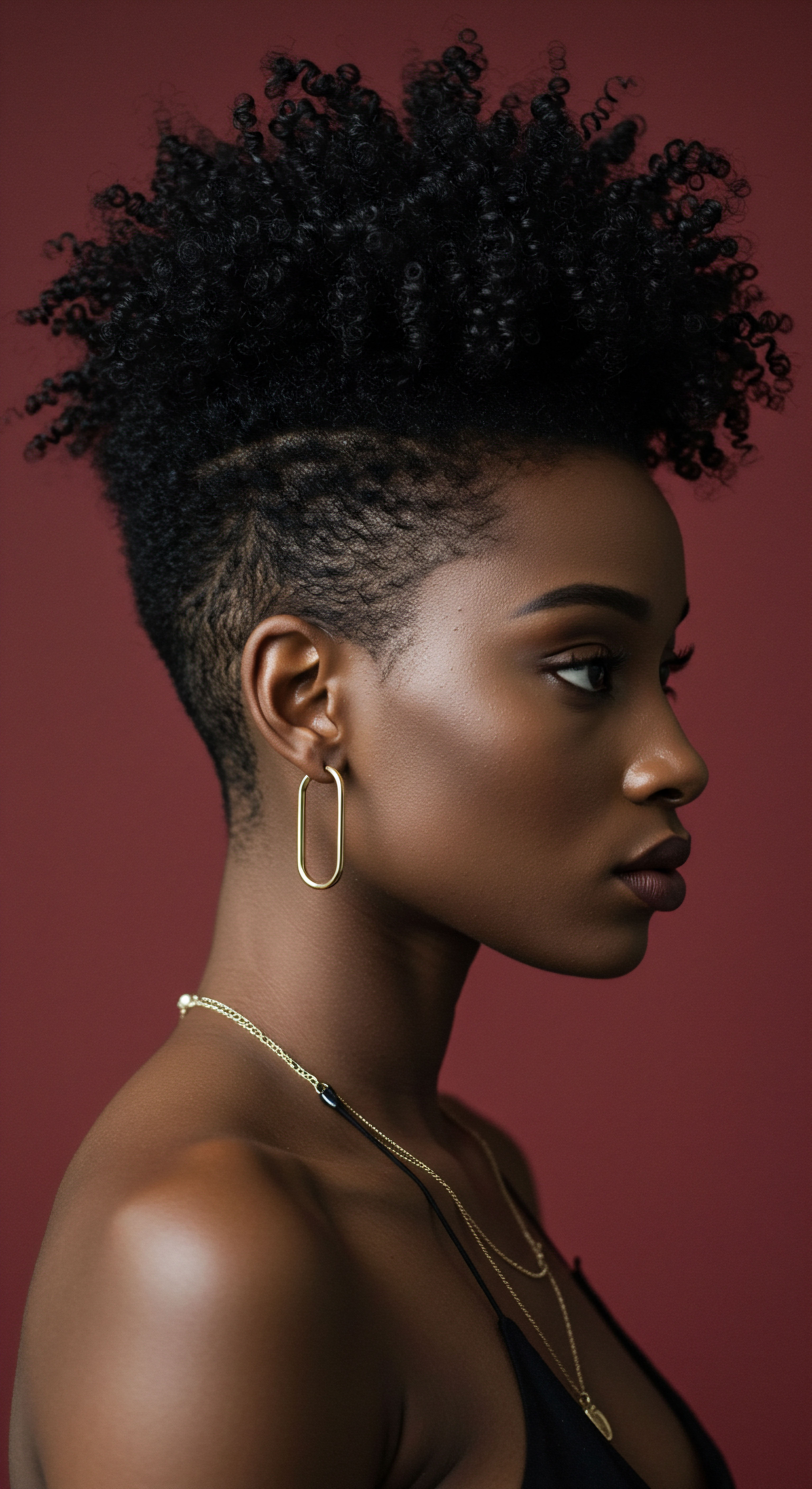
The Cortex And The Hydration Dance
Once water bypasses the cuticle, it enters the cortex, the very core of the hair’s strength. Here, water molecules interact with the keratin proteins through a process known as Sorption. The keratin acts like a sponge, drawing in water, causing the hair fiber to swell.
This swelling is a natural and expected response to hydration. However, the extent and frequency of this swelling can bear consequences for the hair’s long-term resilience.
The unique coiled pattern of textured hair means that this swelling is not uniform along the entire length of the strand. The tighter the curl, the more twists and turns the water must navigate, and the more localized stress points can form as the hair expands. This differential swelling can place strain on the internal bonds of the hair, particularly if the hair is repeatedly wetted and dried without adequate protection or care.
- Keratin Proteins ❉ The primary building blocks of hair, responsible for its strength and shape.
- Disulfide Bonds ❉ Strong chemical linkages within the keratin structure that stabilize the hair’s form.
- Hydrogen Bonds ❉ Weaker, temporary bonds that are easily broken by water and reformed upon drying, contributing to temporary style changes.
A study published in the Journal of Cosmetic Science examined the hygroscopic behavior of different hair types, revealing that curly hair fibers exhibit greater swelling and a higher equilibrium moisture content compared to straight hair fibers under similar humidity conditions. This differential absorption and desorption cycle contributes to the unique challenges of maintaining structural integrity in textured hair.

Ritual
With an understanding of water’s foundational engagement with textured hair, we now turn our attention to the daily and periodic practices that shape this interaction. The ways we invite water into our hair care routines, and the methods we employ to manage its presence, hold considerable sway over the enduring vitality of our strands. It is in these moments of washing, conditioning, and styling that the scientific principles of water’s effect truly come alive, guiding us toward practices that honor and sustain the hair’s intrinsic structure.

The Cleansing Ceremony What Water Reveals
The act of cleansing textured hair, often involving copious amounts of water, is a double-edged sword. While essential for removing product buildup and environmental impurities, it is also the moment when hair is most vulnerable to the effects of water absorption. During washing, the hair fiber swells significantly, increasing its diameter by as much as 15-20% in some instances. This swelling, while necessary for thorough cleansing and conditioning agent penetration, also temporarily weakens the hair’s tensile strength.
Consider the phenomenon of Hygral Fatigue. This condition, often overlooked, arises from repeated cycles of excessive swelling and drying. When hair absorbs too much water, its internal protein structure can become compromised.
The constant expansion and contraction can strain the hydrogen bonds and even weaken the more permanent disulfide bonds over time, leading to increased porosity, brittleness, and breakage. This is particularly relevant for textured hair, which, due to its natural inclination to absorb more water, is more susceptible to these cycles of stress.

Conditioning’s Shield How Products Alter Water’s Influence
The application of conditioners and leave-in treatments plays a critical part in mediating water’s influence. These products often contain ingredients that create a hydrophobic (water-repelling) layer on the hair surface, helping to smooth down the cuticle scales. This barrier reduces the rate at which water can enter and leave the hair fiber, mitigating excessive swelling and the associated stress.
Ingredients such as fatty alcohols, silicones, and certain oils are adept at forming this protective film. By sealing the cuticle, they help to maintain the hair’s optimal moisture balance, preventing both over-hydration and rapid dehydration. This protective layer is not merely cosmetic; it actively contributes to preserving the hair’s structural integrity by stabilizing its internal moisture content.
Strategic product application creates a protective shield, moderating water’s impact on hair’s internal structure.
To illustrate, think of the hair fiber like a delicate bridge. Repeated, uncontrolled swelling and shrinking (from water) without proper reinforcement (from conditioners) can weaken its supports. The ritual of conditioning provides that reinforcement, allowing the bridge to withstand the natural ebb and flow of moisture without compromising its foundation.

Drying Dynamics Air, Heat, and Hair Health
The drying process is as important as the wetting process when considering structural integrity. Rapid or aggressive drying methods, particularly high heat, can strip water too quickly from the hair, leading to a phenomenon known as Thermal Shock. This sudden dehydration can cause the hair fiber to contract abruptly, leading to microscopic cracks and further damage to the cuticle and cortex.
Air drying, while gentler, still requires attention. Allowing textured hair to air dry completely without any protective measures can lead to excessive moisture loss and frizz, as the lifted cuticle scales remain open. The ideal approach often involves a balance ❉
- Gentle Towel Drying ❉ Using a microfiber towel or an old cotton t-shirt to gently blot excess water, rather than rubbing, helps to keep cuticle scales flat.
- Leave-In Products ❉ Applying leave-in conditioners or stylers to damp hair helps to seal in moisture as the hair dries, preventing rapid water loss.
- Low Heat Diffusion ❉ If using heat, a diffuser on a low-heat, low-speed setting can distribute heat evenly and minimize direct thermal stress.
| Porosity Type Low Porosity |
| Cuticle Behavior Tightly bound |
| Water Absorption Resists initial absorption |
| Drying Time Longer |
| Porosity Type Medium Porosity |
| Cuticle Behavior Moderately open |
| Water Absorption Balanced absorption |
| Drying Time Moderate |
| Porosity Type High Porosity |
| Cuticle Behavior Open, raised |
| Water Absorption Absorbs rapidly |
| Drying Time Shorter |
| Porosity Type Understanding your hair's porosity guides optimal water management and product choice. |
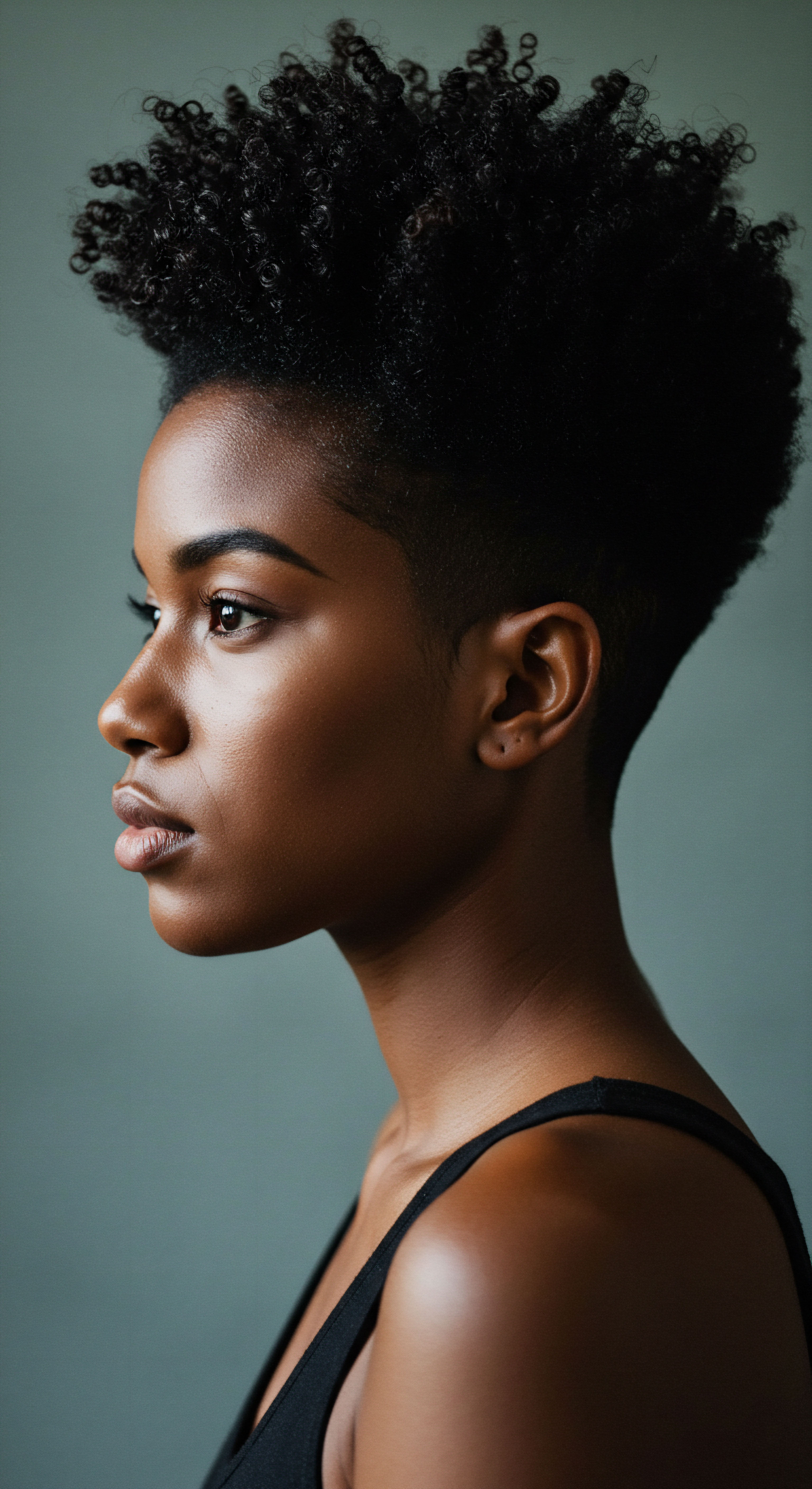
Relay
Beyond the foundational understanding of hair anatomy and the practicalities of daily rituals, the deeper implications of water’s interaction with textured hair extend into realms of molecular behavior, environmental influence, and even cultural practice. To truly grasp how water affects the structural integrity of textured hair, we must consider the intricate interplay of forces that govern the hair fiber’s long-term health, moving beyond the obvious to the subtle yet significant.

Molecular Dance How Water Alters Hair Bonds
The true structural integrity of hair lies in its internal bonds. While disulfide bonds provide the permanent shape and strength, hydrogen bonds are far more numerous and temporary. These weaker bonds are responsible for holding the keratin chains in their coiled configuration.
When hair becomes wet, water molecules break these hydrogen bonds, allowing the keratin chains to move and reorient themselves. As the hair dries, new hydrogen bonds form in the hair’s new configuration, which is why wet hair can be stretched and styled into different shapes that hold once dry.
The challenge for textured hair arises from the sheer density of these bonds and the unique geometry of the coiled fiber. The constant breaking and reforming of hydrogen bonds, particularly with frequent wetting and drying, can place cumulative stress on the more permanent disulfide bonds. While healthy hair can withstand this dynamic process, hair already compromised by chemical treatments, heat styling, or mechanical stress is far more vulnerable. The repeated swelling and contraction can lead to what is often termed “hygral Stress”, a chronic weakening of the fiber that manifests as increased frizz, loss of curl definition, and ultimately, breakage.
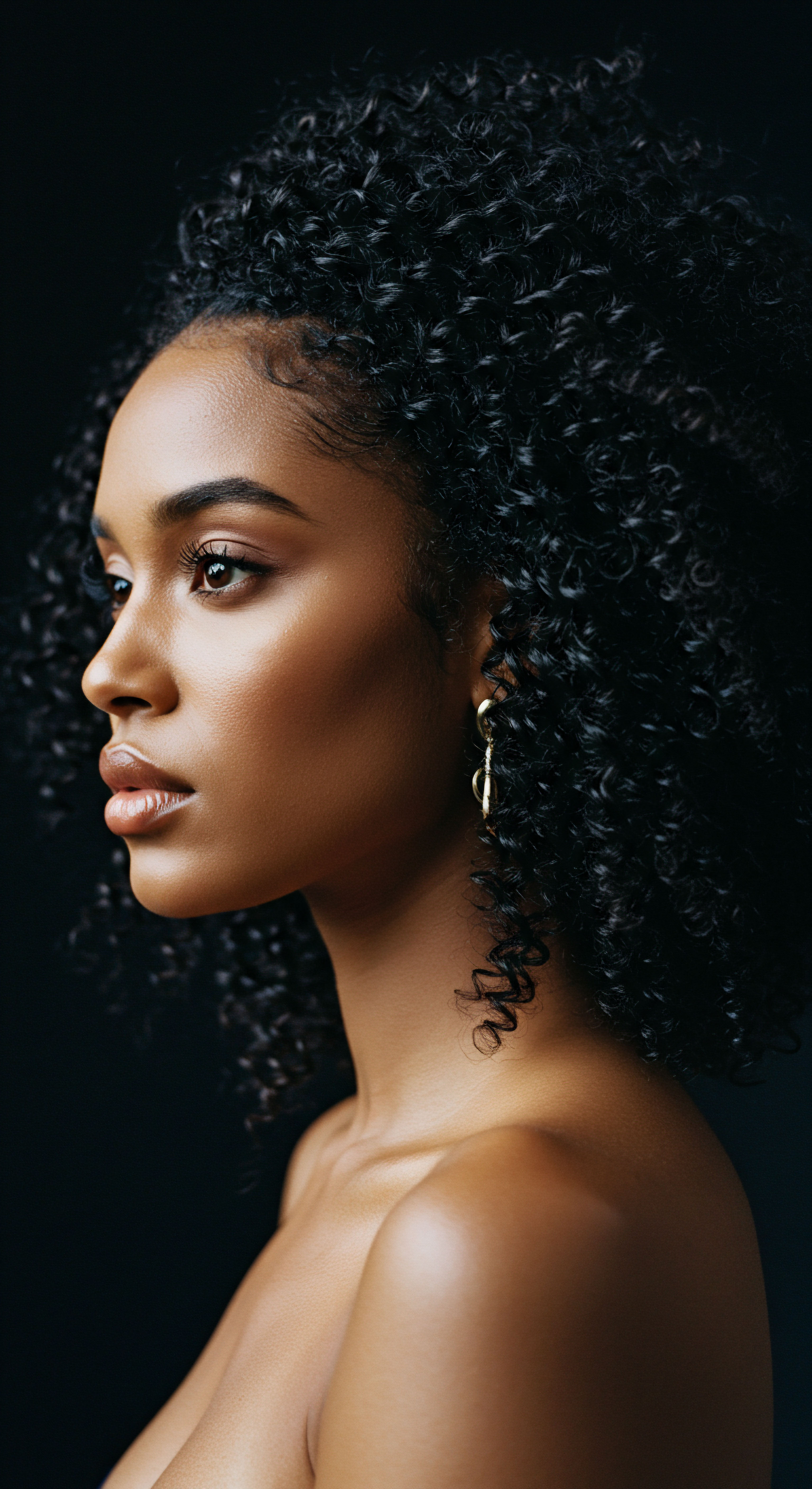
Does Hard Water Hurt Textured Hair?
The very quality of the water we use can also play a role. Hard water, prevalent in many regions, contains elevated levels of dissolved minerals like calcium and magnesium. When this mineral-rich water interacts with hair, these ions can deposit onto the hair shaft.
Over time, this mineral buildup can create a rough, dull film on the cuticle, impeding its ability to lie flat. This leads to increased friction between strands, making hair more prone to tangling and mechanical damage.
Furthermore, mineral deposits can hinder the hair’s ability to absorb and release moisture effectively, disrupting the delicate hydration balance. A study published in the International Journal of Trichology discussed how mineral accumulation from hard water can contribute to increased hair stiffness and reduced elasticity, particularly impacting the natural pliability of textured hair. The accumulation of these minerals can also react with styling products, forming insoluble precipitates that weigh hair down and make it feel gritty, further compromising its aesthetic and structural health.
The presence of hard water minerals can significantly compromise the cuticle’s integrity and hair’s overall suppleness.

Environmental Humidity The Unseen Water Factor
Beyond direct contact with water, the moisture content of the surrounding air, or Humidity, exerts a continuous influence on textured hair. Hair is naturally hygroscopic, meaning it readily absorbs moisture from the atmosphere. In humid environments, textured hair, with its propensity for water absorption, can swell excessively, leading to a loss of curl definition and the familiar phenomenon of frizz. This frizz is a visible manifestation of the cuticle scales lifting as the hair takes on more water, creating a rougher surface.
Conversely, in very dry climates, hair can lose moisture rapidly to the atmosphere, leading to dryness, brittleness, and static. This constant tug-of-war with environmental humidity underscores the need for products that help regulate the hair’s internal moisture content, creating a protective barrier against extreme fluctuations. The strategic use of humectants and emollients in hair care products becomes paramount in managing these environmental impacts.
The concept of “water Memory” in hair, while not a scientifically established term in the way a computer has memory, refers to the hair’s tendency to revert to its natural curl pattern when exposed to water. This is due to the breaking and reforming of hydrogen bonds. When textured hair is stretched straight, say through blow-drying, the hydrogen bonds are reformed in a straightened configuration.
However, upon re-wetting, these temporary bonds break, allowing the hair’s natural coiled structure, governed by its disulfide bonds, to reassert itself. Understanding this inherent “memory” is vital for effective styling and care, recognizing that water will always seek to restore the hair’s true form.
- Hygroscopic Nature ❉ Hair’s innate ability to absorb and release moisture from the surrounding environment.
- Hydrophobic Layer ❉ A protective film, often formed by conditioners, that resists water penetration.
- Ionic Bonds ❉ Chemical bonds that can be affected by the pH of water, impacting hair’s strength.
| Water Type Soft Water |
| Key Characteristics Low mineral content |
| Potential Hair Impact Less buildup, good lather |
| Management Strategies Generally beneficial, but can make hair feel overly soft if not rinsed well. |
| Water Type Hard Water |
| Key Characteristics High mineral content (calcium, magnesium) |
| Potential Hair Impact Mineral buildup, dullness, stiffness, frizz, color fading. |
| Management Strategies Chelating shampoos, vinegar rinses, shower filters. |
| Water Type Chlorinated Water |
| Key Characteristics Contains chlorine |
| Potential Hair Impact Dryness, brittleness, color stripping. |
| Management Strategies Pre-wetting hair, swim caps, clarifying shampoos. |
| Water Type The composition of water used for hair care directly influences its structural integrity and appearance. |

Reflection
The journey through water’s interaction with textured hair reveals a complex, yet beautifully logical, relationship. It is a constant dialogue between the hair fiber’s inherent design and the environmental forces it encounters. From the delicate lifting of cuticle scales to the molecular dance within the cortex, water is not a passive bystander but an active participant in the story of our hair’s health.
By understanding these intricate processes, we move beyond mere product application to a deeper, more respectful engagement with our strands, allowing us to cultivate not just beauty, but true, lasting vitality. The quiet wisdom of water, in its ability to both nourish and challenge, ultimately guides us toward a more harmonious existence with our textured crowns.
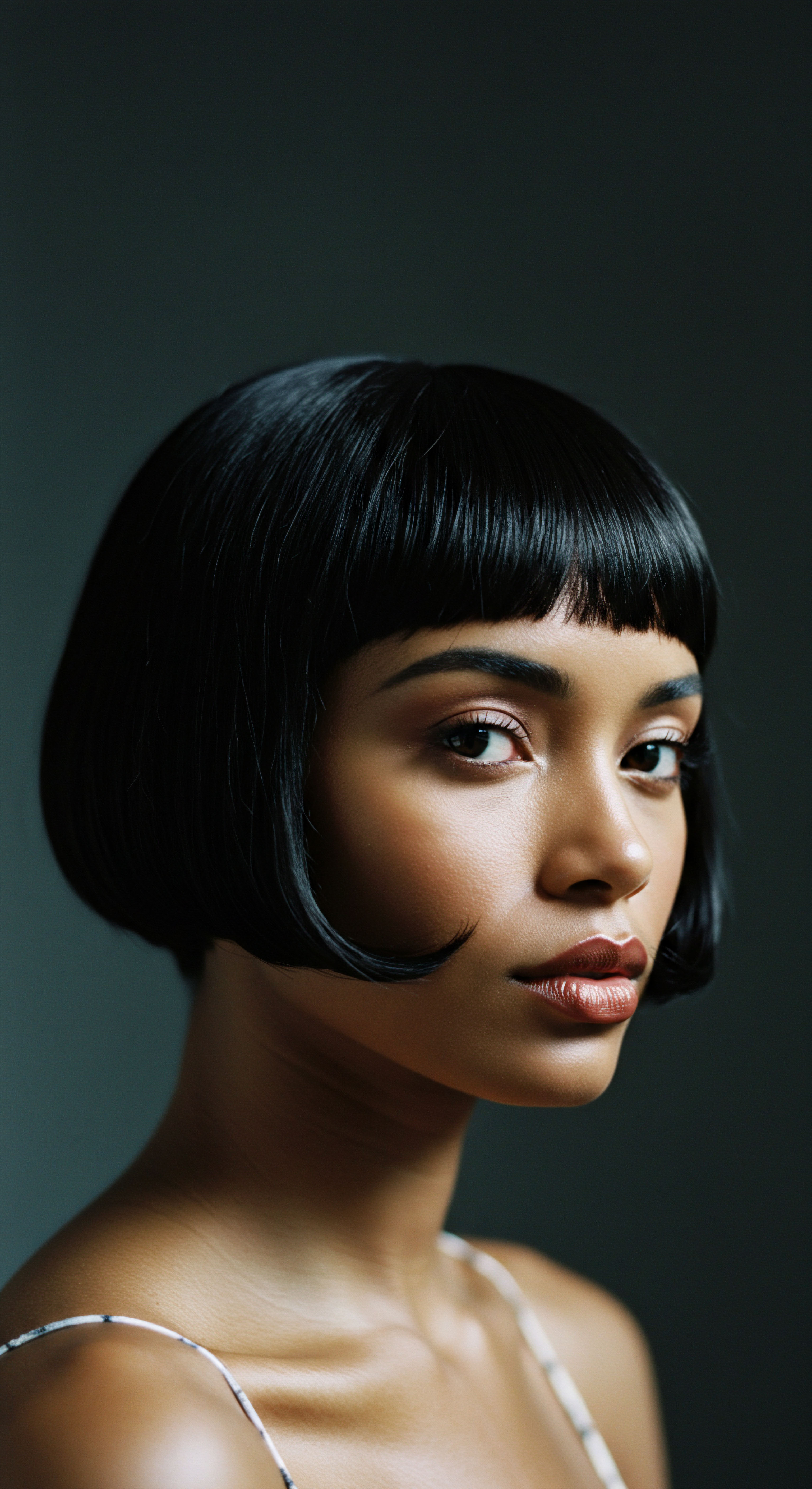
References
- Franbourg, A. Hallegot, P. Baltenneck, F. Freyssinet, J. M. & Bouillon, C. (2003). Current research on ethnic hair. Journal of Cosmetic Science, 54(5), 515-534.
- Dawber, R. P. R. & Van Neste, D. (2003). Hair Loss ❉ Medical and Cosmetic Aspects. CRC Press. (While this book covers various aspects, it includes discussions on environmental factors affecting hair, including water quality.)
- Robbins, C. R. (2012). Chemical and Physical Behavior of Human Hair (5th ed.). Springer. (A comprehensive text on hair science, including water interactions.)
- Wolfram, L. J. & Wortmann, F. J. (2007). Hair and Hair Care. Marcel Dekker. (Offers detailed insights into hair structure and its response to various agents, including water.)
- Khumalo, N. P. & Gumedze, F. N. (2018). The Science of Black Hair ❉ A Comprehensive Guide to Textured Hair Care. CreateSpace Independent Publishing Platform. (This book, while self-published, synthesizes scientific understanding with practical application for textured hair, often citing relevant research.)